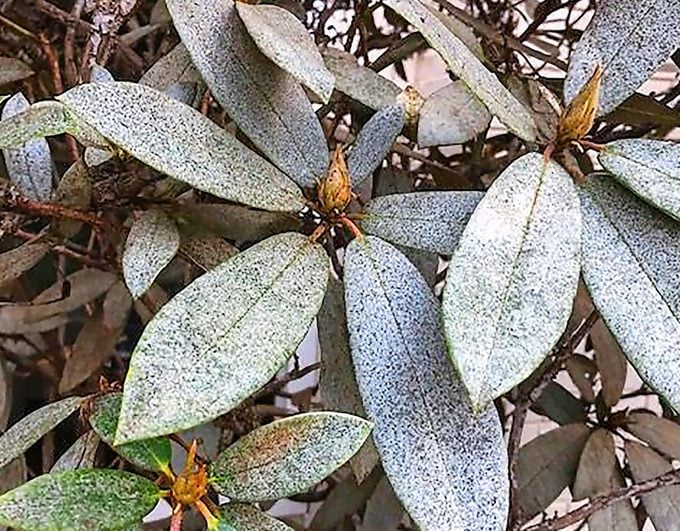How to Get Rid of Powdery Mildew
Updated: Feb. 27, 2024
Learn what powdery mildew looks like on plant leaves and what causes this fungal disease. A garden expert explains the best treatments for powdery mildew.

What Causes Powdery Mildew?
“My red rhododendron looks as if it has a layer of ash or white powder on it. What should I do?” asks Steven Graves of Aptos, California. Your rhododendron has powdery mildew. Leaves infected with powdery mildew look as if they’ve been dusted with flour. Plants that are healthy otherwise will survive this disease. But it does affect appearance and reduce vegetable productivity.
In severe cases, the powdery fungal threads cover the leaf surface, blocking light from reaching the leaves. These leaves may turn yellow and drop off the plants. Give plants plenty of room and sunlight; sufficient light and airflow reduce the risk of the fungal disease. Powdery mildew is most common on overcrowded plants and those growing in shade. If the shade hasn’t increased and plants are not overcrowded, this is likely a response to the weather.
Learn about the top 10 tree diseases (and what to do about them).
Powdery Mildew Treatment
If this disease is an annual problem in your garden, it may be time to take action. Plant something a bit shorter in front of the susceptible specimen. The shorter plant masks the unsightly mildewed leaves but allows you to enjoy the blossoms.
Do a thorough cleanup and discard infected leaves in fall to reduce the source of future disease next year. Stop powdery mildew before it starts by choosing mildew-resistant varieties whenever possible.
Plants suffering yearly infections and severe leaf drop may benefit from treatment. Treat the plants with Summit Year-Round Spray Oil or other organic lightweight horticulture oil. These create a barrier between the leaf and disease. Synthetic fungicides labeled for this purpose can be applied preventively at the first sign of the disease. As always, read and follow label directions, whether using organic or synthetic chemicals.
Next, learn how to get rid of the 10 worst garden insects.




















